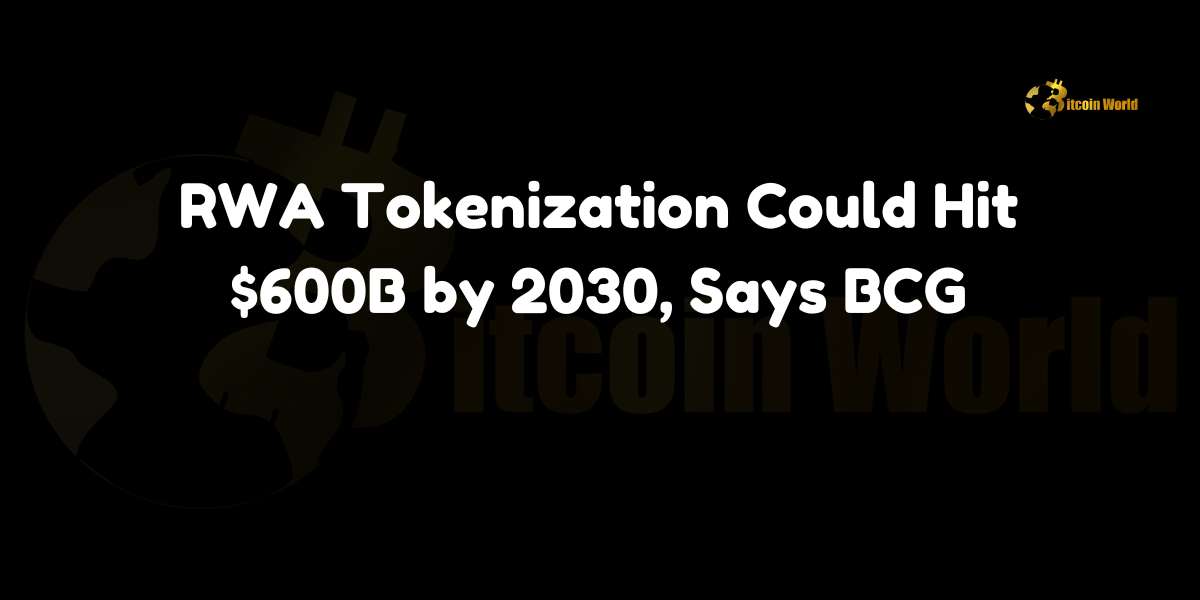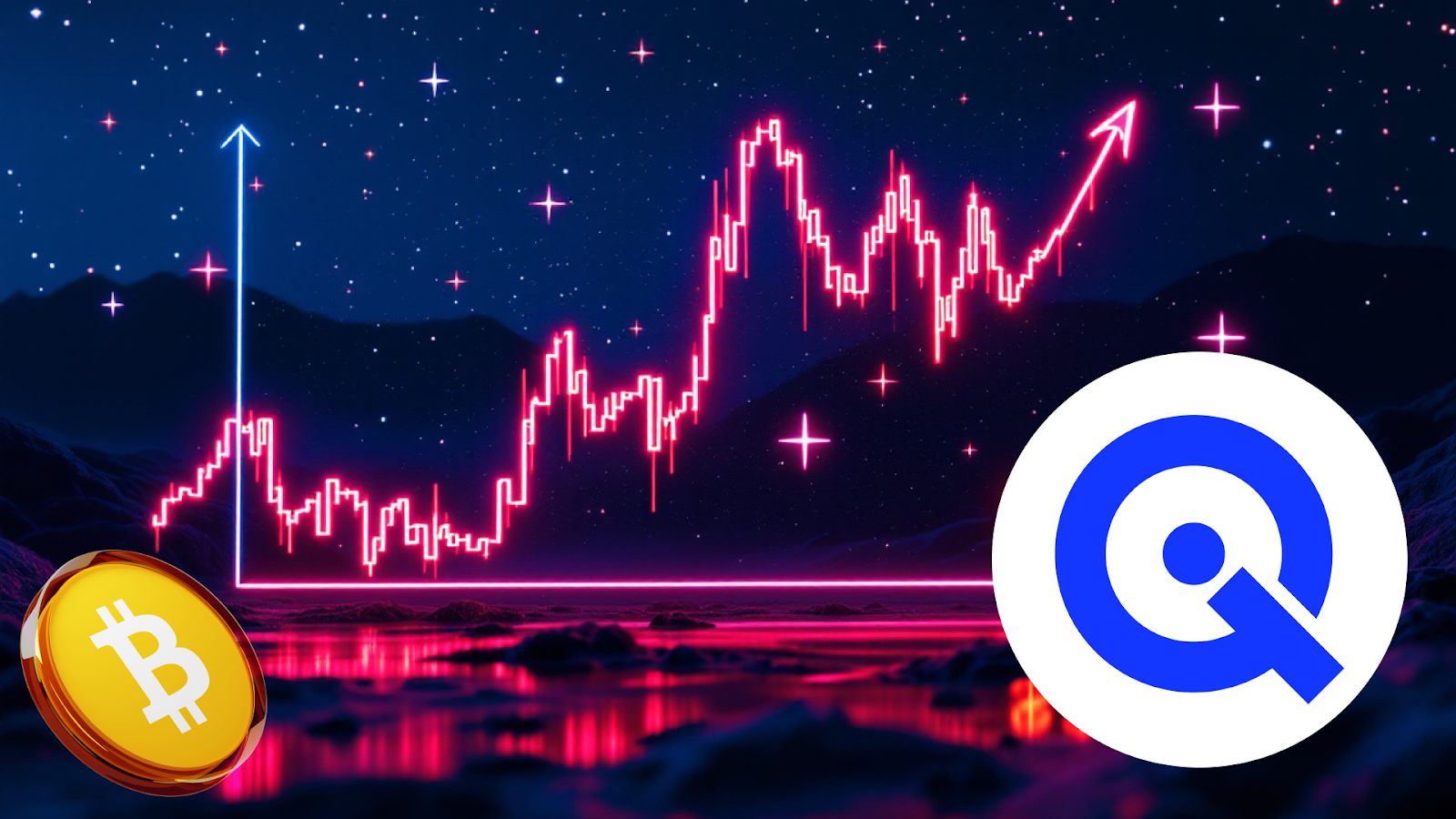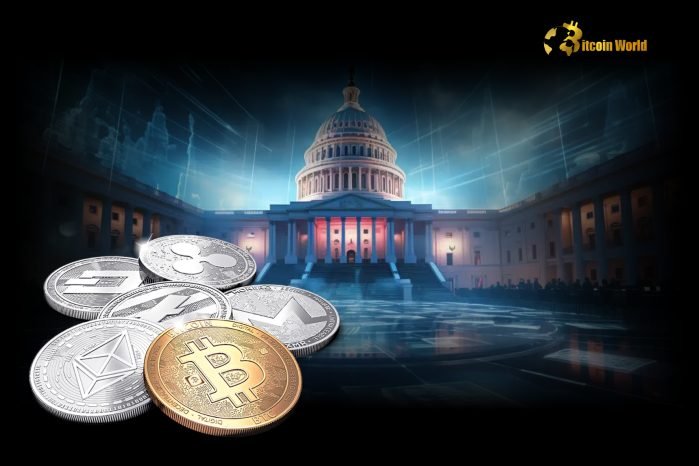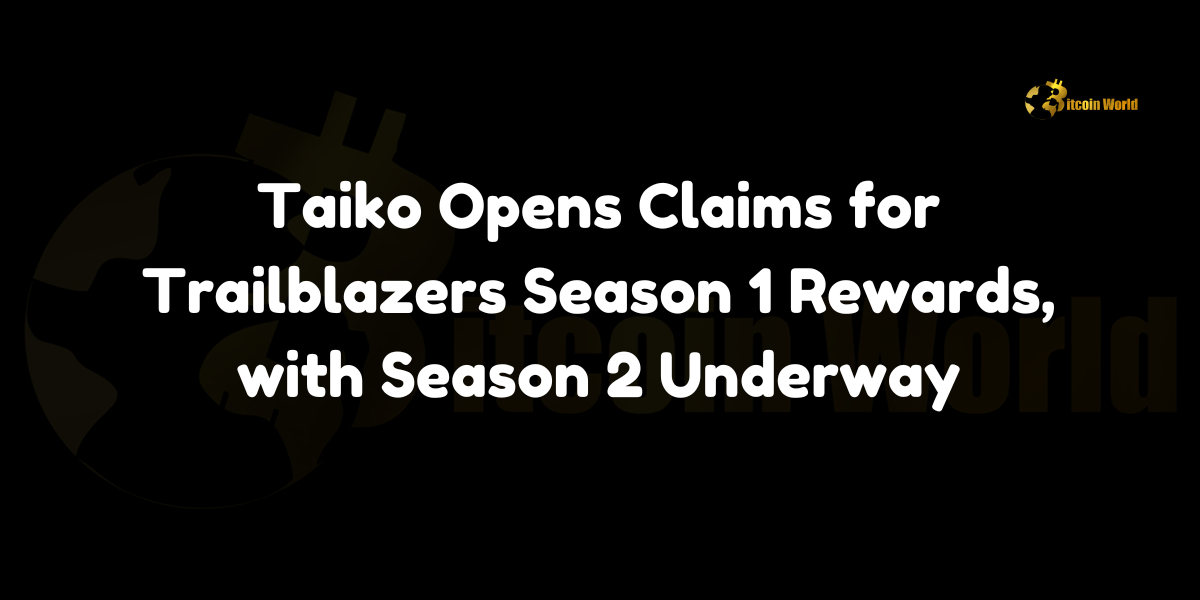RWA Tokenization Could Hit $600B by 2030, Says BCG
Real-world asset (RWA) tokenization is poised for substantial growth, with projections indicating that assets under management could soar to $600 billion by 2030. This optimistic forecast comes from a recent report by the Boston Consulting Group (BCG), as reported by Cointelegraph. David Chan, BCG Managing Director and Partner, emphasized the increasing investor demand for tokenized funds and highlighted the pivotal role of regulated stablecoins, tokenized deposits, and central bank digital currencies (CBDCs) in driving this expansion.
Introduction to RWA Tokenization
What is RWA Tokenization?
Real-world asset tokenization involves converting physical assets, such as real estate, commodities, and financial instruments, into digital tokens on a blockchain. This process enhances liquidity, accessibility, and transparency, allowing for fractional ownership and easier transfer of assets. By leveraging blockchain technology, RWA tokenization bridges the gap between traditional finance and decentralized finance (DeFi), opening up new avenues for investment and asset management.
Significance of the BCG Report
The Boston Consulting Group’s (BCG) report provides a comprehensive outlook on the future of RWA tokenization, underscoring its potential to revolutionize asset management. The projection of $600 billion in assets under management by 2030 reflects the growing confidence in blockchain-based solutions and the increasing acceptance of tokenized assets among institutional and retail investors alike.
Factors Driving the Growth of RWA Tokenization
Rising Investor Demand for Tokenized Funds
Investor appetite for tokenized funds is surging, driven by the desire for greater liquidity and diversified investment opportunities. Tokenized funds offer the benefits of traditional investment vehicles while providing the flexibility and efficiency of blockchain technology. This growing demand is a key driver behind the projected increase in RWA tokenization.
Regulated Stablecoins
Regulated stablecoins play a crucial role in the RWA tokenization ecosystem. By providing a stable and reliable medium of exchange, regulated stablecoins reduce the volatility associated with other cryptocurrencies, making them more attractive for institutional investors. These stablecoins facilitate seamless transactions and enhance the overall stability of tokenized asset markets.
Tokenized Deposits
Tokenized deposits are another significant factor contributing to the growth of RWA tokenization. By converting traditional deposit accounts into digital tokens, financial institutions can offer more flexible and accessible banking services. Tokenized deposits enable faster and more secure transactions, improving the efficiency of asset management and investment processes.
Central Bank Digital Currencies (CBDCs)
The introduction and adoption of Central Bank Digital Currencies (CBDCs) are expected to further drive the growth of RWA tokenization. CBDCs provide a regulated and secure digital currency framework, enhancing the credibility and trustworthiness of blockchain-based financial solutions. The integration of CBDCs with RWA tokenization platforms can facilitate smoother and more compliant asset tokenization processes.
Expert Insights
David Chan, BCG Managing Director and Partner
“The projection of $600 billion in assets under management through RWA tokenization by 2030 highlights the transformative potential of blockchain technology in traditional finance. The convergence of regulated stablecoins, tokenized deposits, and CBDCs creates a robust foundation for sustainable growth in the tokenization of real-world assets.”
Dr. Emily Carter, Blockchain Analyst
“RWA tokenization is set to redefine asset management by enhancing liquidity and democratizing access to investments. The integration of regulated stablecoins and CBDCs will address many of the regulatory and security concerns, making tokenized assets a viable option for a broader range of investors.”
Mark Thompson, Financial Strategist
“The increasing demand for tokenized funds indicates a shift in investor preferences towards more flexible and efficient investment vehicles. As the infrastructure for RWA tokenization continues to mature, we can expect significant advancements in how assets are managed and traded globally.”
Implications for the Financial Ecosystem
Enhanced Liquidity and Accessibility
RWA tokenization significantly enhances the liquidity of traditionally illiquid assets, such as real estate and fine art. By enabling fractional ownership and easier transferability, tokenized assets become more accessible to a wider pool of investors, including those who previously lacked the capital to invest in such assets.
Increased Transparency and Security
Blockchain technology ensures that all transactions involving tokenized assets are transparent and immutable. This increased transparency reduces the risk of fraud and enhances the security of asset transactions, fostering greater trust among investors and stakeholders.
Diversification of Investment Portfolios
Tokenized real-world assets allow investors to diversify their portfolios beyond traditional asset classes. This diversification can lead to more balanced and resilient investment strategies, mitigating risks associated with market volatility and economic downturns.
Regulatory Compliance and Standardization
The adoption of regulated stablecoins and CBDCs within the RWA tokenization framework promotes regulatory compliance and standardization. This alignment with regulatory requirements is essential for gaining institutional acceptance and ensuring the long-term viability of tokenized asset markets.
Future Outlook
Continued Technological Advancements
Advancements in blockchain technology, such as improved scalability and interoperability, will further facilitate the growth of RWA tokenization. These technological improvements will enable more efficient and seamless integration of real-world assets into the blockchain ecosystem.
Strategic Partnerships and Collaborations
Collaborations between financial institutions, blockchain platforms, and regulatory bodies will play a critical role in driving the adoption of RWA tokenization. Strategic partnerships can help establish industry standards, enhance regulatory frameworks, and promote the development of innovative tokenization solutions.
Global Expansion and Market Penetration
As RWA tokenization gains traction, we can expect a global expansion of tokenized asset markets. Emerging markets, in particular, present significant opportunities for RWA tokenization, as blockchain technology can address long-standing challenges related to asset management and financial inclusion.
Educational Initiatives and Investor Awareness
Educational initiatives aimed at increasing investor awareness and understanding of RWA tokenization will be crucial for its widespread adoption. By demystifying the complexities of blockchain technology and tokenized assets, more investors will be encouraged to participate in tokenized asset markets.
Conclusion
The Boston Consulting Group’s projection of $600 billion in assets under management through RWA tokenization by 2030 underscores the immense potential of blockchain technology to transform traditional finance. Driven by rising investor demand, regulated stablecoins, tokenized deposits, and CBDCs, RWA tokenization is set to revolutionize asset management by enhancing liquidity, accessibility, transparency, and security.
As the financial ecosystem continues to evolve, the integration of real-world assets with blockchain technology will create new opportunities for investors and financial institutions alike. By fostering innovation and promoting regulatory compliance, RWA tokenization will play a pivotal role in shaping the future of finance, driving sustainable growth, and fostering a more inclusive and efficient global financial system.
To stay updated on the latest developments in RWA tokenization and blockchain innovations, explore our article on latest news, where we cover significant events and their impact on the digital asset ecosystem.





